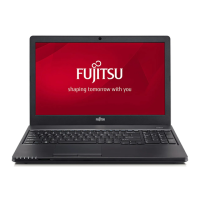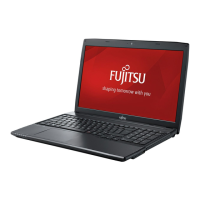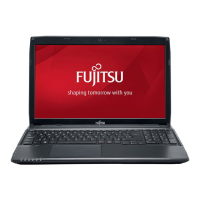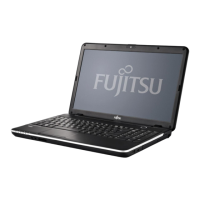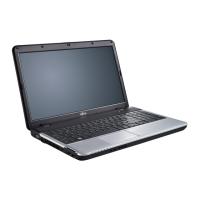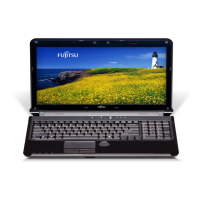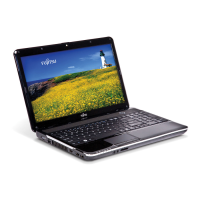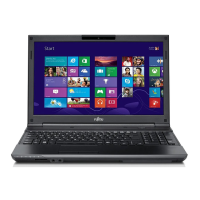Troubl esho ot ing and tips
The notebook cannot be started
Notebook
Cause Troub leshooting
The battery is not installed co
rrectly.
► Check whether the batte ry is installed
correctly in its compartment.
► Switch the notebook on.
The battery is dead.
► C harge the battery.
or
► Insert a charged battery.
or
► Connect the mains adapter to the
notebook.
The mains ada pter is not co nnected correctly.
► Check whether the mains adapter is
connected correctly to the notebook.
► Switch the notebook on.
The notebook stops working
NotebookEnergys avingmode
Cause Troub leshooting
Notebook is in energy saving mode. ► Leave energy saving mode.
An application programme has caused the
malfunction.
► Close th e application program or restart
the noteb ook (by restarting the operating
system or sw itching the device off and back
on again).
The battery is dead.
► C harge the battery.
or
► Insert a charged battery.
or
► Connect the mains adapter to the
notebook.
Fujitsu 61
